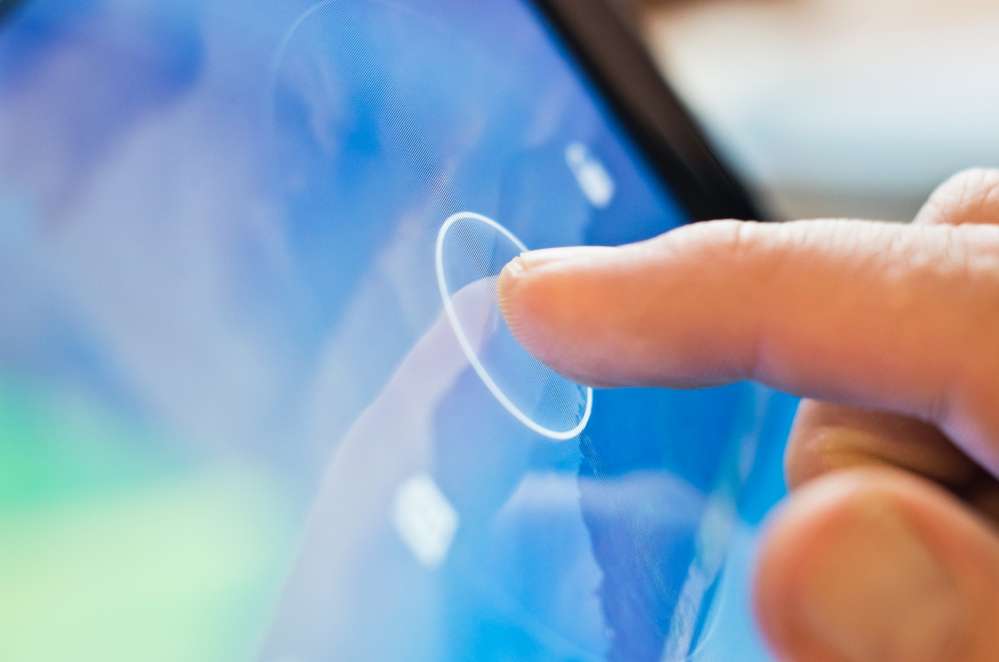
In recent years, touchscreen technology has been evolving rapidly, leading to new and improved technologies that provide consumers and businesses with a wide array of touchscreens to choose from. The capacitive and resistive touchscreens are the likeliest to come across since they dominate the market today.
When it comes to choosing a touchscreen for your industrial application, it is crucial that you understand the most popular types of touchscreens to find the best solution. Learn more about the differences between capacitive and resistive touchscreens, including the pros and cons, from the experts at ACS Industrial Services. While resistive touchscreens are still available, capacitive touchscreens are the wave of the future.
Resistive Touchscreens
The resistive touchscreen uses a simple technology and comprises two flexible layers separated by an air gap or inert gas. Both layers have a metallic coating, which creates an electric flow when pressure is applied. When someone applies pressure to the screen, the resistance is measured between the two layers indicating where the point of contact is on the panel.
Resistive touchscreens can therefore register touches made by gloved fingers, stylus pen, or anything blunt enough not to damage the screen. The resistive touchscreen has four touch sensing lines incorporated in the central display tail due to its simple technology, resulting in a single connection between the controller and display component.
The resistive touchscreen was one of the most common touch screens used in industrial electronics because of its cost effectiveness. Some of its general manufacturing uses include ATMs, medical devices, and card readers in grocery stores.
Capacitive Touchscreens
Capacitive touchscreens are made of glass coated with a transparent and conductive material like indium tin oxide. They use the electrical properties of the human body as input. When a sufficiently capacitive object such as a finger touches the screen, the technology registers a change in the electrostatic field. A stylus pen or gloved finger can also work as long as they are made of a conductive material that simulates a bare finger. Capacitive touchscreens require more lines to connect to the controller and thus have a separate tail from the main display tail.
Capacitive vs. Resistive Touchscreens: Pros and Cons
Apart from differences in component structure, there are advantages and disadvantages to consider when choosing between a capacitive touchscreen and a resistive touchscreen.
Cost
Capacitive touch is relatively expensive since they require a complex technology with a processor for interfacing. Resistive touch is inexpensive since it uses simple circuits and interfacing.
Impact Resistance and Durability
Capacitive touchscreens are more prone to crack on impact, although their touch function can still work even when cracked. In addition, its outer surface is relatively scratch-resistant, making them durable in the long term.
Resistive touchscreens are more impact resistant. However, their touch functionality seizes to work once cracked. Together with their heavy outdoor application, this makes them less durable in the long run.
Touch Sensing and Contaminant Resistance
Capacitive screens can detect multiple touches at an instance, can also support gestures like swipes and pinches, and is more sensitive to light touches. Due to this high sensitivity, dirt and moisture can lead to it registering unintended touches, making it low resistance to contaminants.
Resistive screens only register single touches that require pressure, meaning that foreign material such as moisture and dirt do not affect touch sensing. This also reduces the possibility of accidental touches.
Contrast and Clarity
Capacitive screens have excellent image quality with better contrast and sharpness due to their good light transmission, unlike the resistive ones with limited light transmission.
Get in Touch with ACS
Now that you know the difference between capacitive vs. resistive touchscreens, reach out to ACS Industrial Services for all your industrial electronic repair services, including touch screen repairs! The experts at ACS will provide you with a free evaluation and repair quote. Some of the reasons why you should consider our repair services include:
- A repair can often save up to 80% of the cost of purchasing a new piece of equipment
- Most repairs are returned to you within 7-15 days of approval
- After approval, our Rush Repair Service ships in just 2-5 days
- We provide a two-year warranty on all repairs
Use our RMA Form link or Contact Us for a free evaluation. You can also call us at 800-605-6419 to speak with a member of our customer service team.
